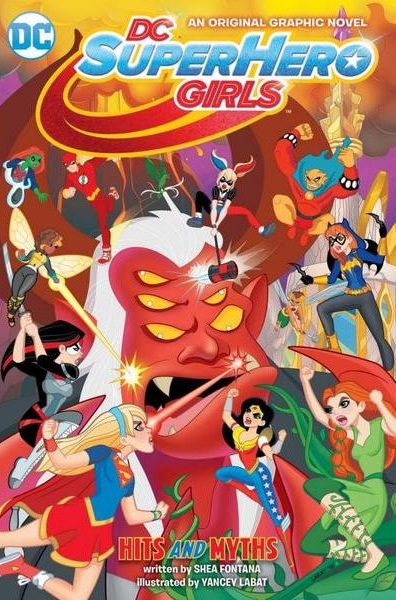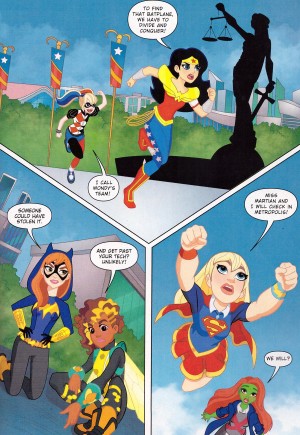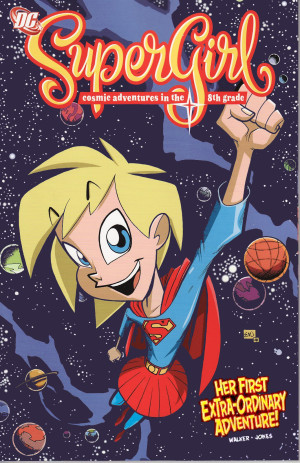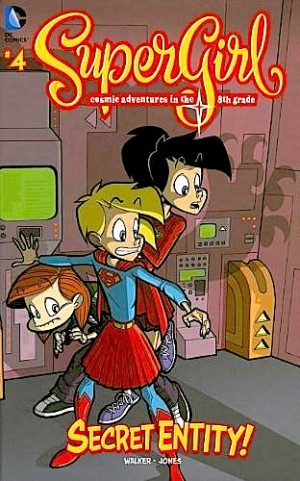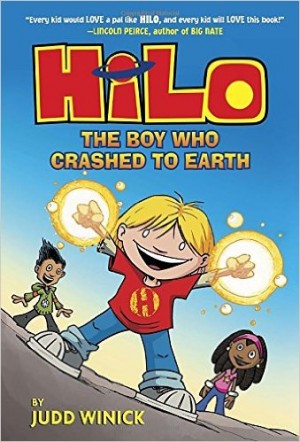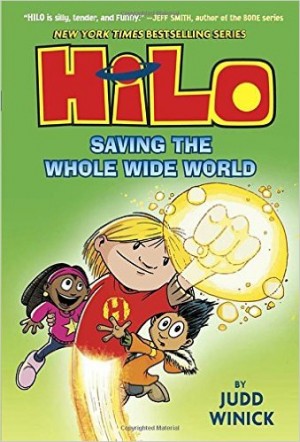Review by Ian Keogh
DC Super Hero Girls is an entry level introduction to DC’s female superheroes by recasting them as high school students, a project produced in conjunction with Mattel who produce an accompanying line of dolls, and the vastly better animation. As a project aimed at young girls, Hits and Myths is relentlessly vividly bright, peppy and upbeat with the cast thrown a series of escalating problems that they always deal with by displaying positive coping mechanisms and cheerful can-do attitudes. It’s not for everyone.
Having learned of The Odyssey in class that day via teacher Etrigan, the assorted superheroes later become involved in an adventure featuring strangely similar threats and situations as they search for Batgirl’s stolen plane.
Oh, where to start? Maybe with the idea of a cutesified version of intergalactic bounty-hunting biker Lobo as a new student? Or Commissioner Gordon popping into the teacher’s lounge to discount a clue? No, let’s begin by considering these to be the original iterations of the characters, so discarding a raft of logical questions about their re-imagining in high school. Let’s also acknowledge that as this is for young children any character depth other than very basic good and bad could be considered surplus to requirement.
Even with that out of the way so many problems remain. The characters are unceasingly prone to self-congratulation. No small victory passes without a gratuitous high five or comment of positive reinforcement, and the moral advice is abundant. Whether by editorial instruction or her own misguided idea of what children need pointed out to them, Shea Fontana’s script is insultingly patronising. There are several occasions where she stops just short of having “This is a clue” in 24 point type plastered across a panel, and not in any ironic fashion. Anyone even vaguely familiar with the characters can speculate as to what the most obvious exploitation of their super powers might be, and several pages later… Given the premise it could be argued that this is a form of empowerment, instilling a sense of pride in younger readers as their guesses are confirmed, but if so, the bar is set an inch off the ground.
The reason this is all so misguided is that DC’s involvement in the partnership is with the intention of hooking the readers young, instilling a fondness for the characters in order that they’ll progress to the next level of DC titles offering a little more sophistication. The alternative is that while not extemporising it as such, at some level the young readers will be aware of the predictability and the lecturing and instead discard the idea of superheroes and look for something with greater entertainment value.
Artist Yancey Labat gets a free pass. His illustrations are ideally suited for the target audience, their appeal in no way diminished by their simplicity.
